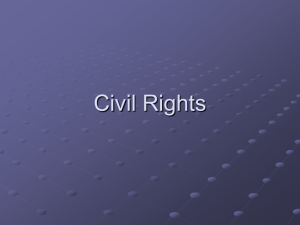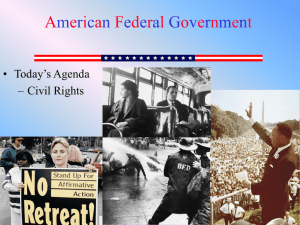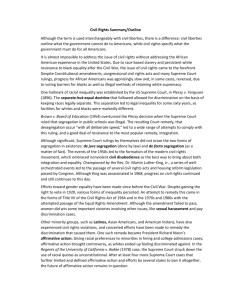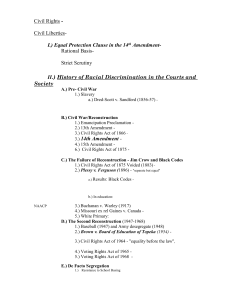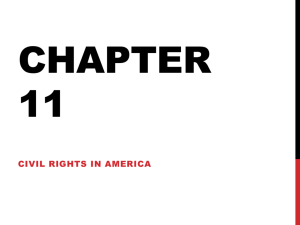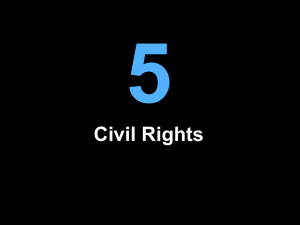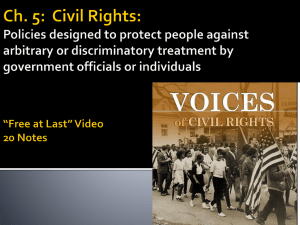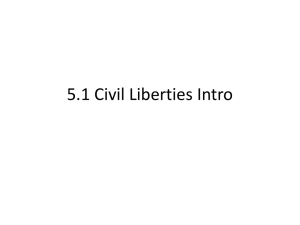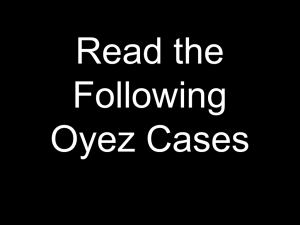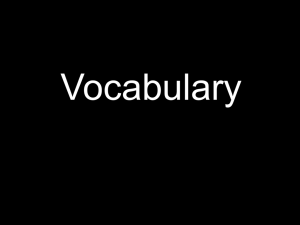Civil Rights
advertisement
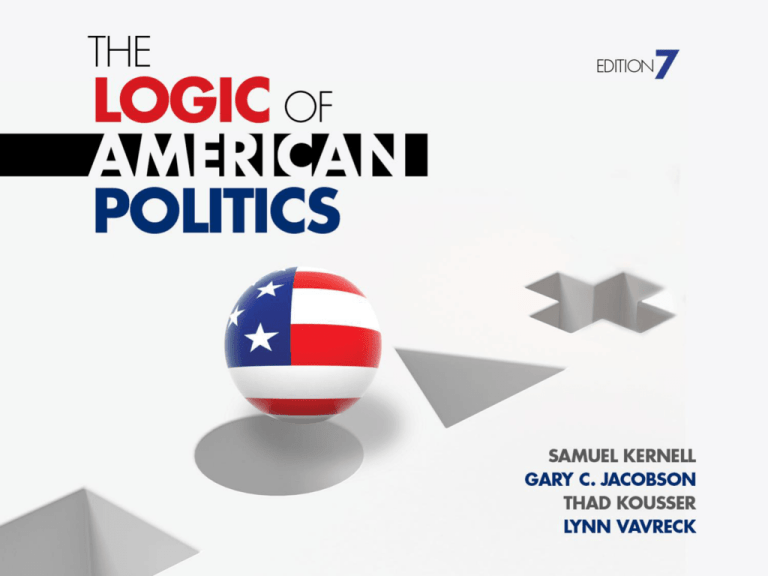
Civil Liberties and Civil Rights Are Not the Same • Civil Rights are the legal or moral claims that citizens are entitled to make on the government – protections by government power; obligation imposed on government to take positive action on behalf of its citizens • The equal protection clause of the Fourteenth Amendment has been the basis for the civil rights of African Americans, women, and other groups The Story of U.S. Civil Rights • Major Obstacles: • U.S. Constitution – Reserves authority to the states – Separation of Powers (Southern filibusters) • Politics based on self-interest – Gov’t controlled by people not angels The Story of U.S. Civil Rights • Height of Slavery (1808-1865) – Nearly 10% of U.S. population – Law ending slave trade enacted in 1808 • Missouri Compromise – Missouri petitioned Congress for admission as a slave state. – Matched MO’s slave state with Maine as a free state. – Drew a border beyond which slavery could not extend. Dred Scott v. Sandford (1857) • California entered as a free state, ending the South’s ability to filibuster legislation. • SC ruled that the federal gov’t could not prevent slavery in the territories. • Lincoln gets elected in 1860 – “free soil, free labor, free men” – The South seceded – Civil War • South loses. Northern troops occupy Southern states. Reconstruction (1865-1877) • During Reconstruction, life (was) relatively good for African-Americans: a number of political parties pursuing their votes & Black welfare indices improved • The Democrats tended towards racial conservatism. – Access to ballot box limited – Rampant violence and fraud in Southern elections. Post-Civil War amendments • Thirteenth – Granted formal emancipation • Fourteenth – Granted full citizenship • Fifteenth – Guaranteed right to vote Reconstruction wanes • Republicans dominated Southern legislatures for a few years – By 1877, all former Confederate states reverted to white Democratic control • Reversal of civil rights process – Vigilante violence (KKK and other groups) – Northern Repubs passed laws, but no enforcement – Federal troops leave the South in 1877. Jim Crow: No civil rights on the ground • Establishment of the one-party state led to a period known as “Jim Crow” (1877-1933) • Southern states adopted a policy of apartheid. – All aspects of life were racially segregated – Electoral laws limited Blacks from voting • • • • White Primary Poll tax Literacy tests Grandfather clauses to protect poor/illiterate Whites. The Struggle for Civil Rights • Just as the Court did not initially use the Fourteenth Amendment to impose the Bill of Rights on the states, the Court was slow to use the equal protection clause to enforce civil rights • The 1875 Civil Rights Act was struck down on the grounds that it applied to private businesses while the Fourteenth Amendment refers to state action Plessy v. Ferguson: “Separate but Equal” • In 1896, the Court went further by upholding a Louisiana statute that required segregation of the races on trolleys and other public carriers and, by implication, in all public facilities including schools • Homer Plessy, a man defined as “oneeighth black,” had violated a law that imposed a fine for any black passenger sitting in a car reserved for whites Plessy v. Ferguson: “Separate but Equal” • In its ruling, the Court said the Fourteenth Amendment “could not have intended to abolish distinctions based on color, or to enforce … a commingling of the two races upon terms unsatisfactory to either” • This was the origin of the “separate but equal” rule, the doctrine that accommodations could be segregated by race but still be equal The Shift: Party Politics and the Civil Rights Movement • FDR’s New Deal – Rooted out racial discrimination in the distribution of relief aid – Appointed over 100 black administrators – Justice Department revives civil liberties division. • Black voters switched allegiance from Republican to Democrat. Fighting Racial Discrimination • Starting in the late 1930s, the Court became more active in equal protection – Required admission to Missouri law school rather than paying for out-of-state tuition for African Americans (1938) – Rejected Texas’s claim that its new law school for African Americans was an equivalent to the all-white U. of Texas (1950) • But these rulings reinforced rather than struck down “separate but equal” Brown v. Board of Education • Linda Brown was a third-grade African American child in Topeka, KS who was denied admission to the all-white school closer to her home • The Court ruled “in the field of public education, the doctrine of ‘separate but equal’ has no place. Separate educational facilities are inherently unequal” Did Brown End Discrimination? • Three problems with Brown’s effects: – Delay in enforcing Brown by local officials – Brown only attacked de jure segregation but could do little about de facto segregation – Brown did not directly address discrimination in employment, voting, etc. • The irony of Brown is that it gave great moral capital to the Court but did not change things much, at least initially – in 1962, less than 1% of black students attended desegregated schools. The Rise of the Civil Rights Movement • Ending discrimination would require more than the Brown decision • The civil rights movement built slowly but surely after Brown, culminating with the March on Washington in 1963 • This required overcoming a collective action problem – Participation is costly… The Civil Rights Movement • Strategy shifted from litigation to mass protest. (1960s) – Rosa Parks and the Montgomery bus boycott – Sit ins – Emergence of MLK – Non-violent resistance The Civil Rights Movement • Civil Rights Act of 1964 – Authorized national gov’t to end segregation in public education and accommodations • Voting Rights Act of 1965 – Federal suspension of states’ restrictive electoral laws. – States have to obtain clearance from Justice Department before changing electoral laws. The Civil Rights Movement The Civil Rights Movement Discrimination in Employment • Title VII of the Civil Rights Act of 1964 outlaws job discrimination by all private and public employers • In Griggs v. Duke Power (1971), the Court put the onus on employers to show that employment policies that have a discriminatory effect put the burden of proof on employers to show the policy is a “business necessity” Gender Discrimination • Seneca Falls Convention (1848) • Nineteenth Amendment (1920) grants women the right to vote in federal elections • Civil rights for women accelerates in the 1960s • ERA falls just short of ratification in 1982 • Burger Court applies intermediate scrutiny to gender discrimination cases Rights for Hispanics • Latinos are among the fastest growing racial/ethnic groups – Congress passed extension of Voting Rights Act in 1970 • Ballots also available in Spanish for districts with more than 5% Hispanic population • Some recent setbacks, but prognosis is good for continuing expansion of rights – Increases in voting power/political office holdings. – Better for Democrats—over 90% of Hispanics vote D. Sexual Orientation • The gay rights movement has become one of the most important contemporary flashpoints for civil rights – Don’t Ask Don’t Tell (recently repealed) – Romer v. Evans (1996) prohibits discrimination based on sexual orientation • Same-sex marriage upheld by SC. Affirmative Action • A policy or program designed to redress historic injustices committed against specific groups by making special efforts to provide members of these groups with access to educational and employment opportunities • Also meant to encourage diversity in educational and employment settings UC Regents vs. Bakke (1978) • Allen Bakke, a white man, applied to UC Davis Medical School and was rejected • The school had reserved 16 of 100 seats that year for minority applicants • Bakke sued on the basis that his grades and test scores were better than some admitted UC Regents vs. Bakke (1978) • The Court ruled that UC Davis’s policy was unconstitutional because it was a quota and had a separate admissions policy for minority students • However, the Court said that taking race into account in admissions is okay if it serves a “compelling public purpose,” such as “achieving a diverse student body” Gratz v. Bollinger (2003) Grutter v. Bollinger (2003) • In various cases, the Court seemed to weaken affirmative action but not deem it unconstitutional in the 25 years after Bakke • In 2003, the Court heard two cases, both from the University of Michigan, and that seemed to uphold both sides of Bakke – Race cannot be a main criterion for admission – Race can be taken into account Affirmative Action and “Preferential Treatment” • Proposition 209, on the California ballot in 1996, sought to ban “preferential treatment” for minorities by state and local government agencies. It passed with 54 percent of the vote • In a 1997 Houston vote, however, 55 percent voted to support “affirmative action” • What we call “affirmative action” matters Limiting and Regulating Collective Action • Both civil liberties and civil rights have expanded over the past century • Expansion of civil rights has allowed more to take part in collective decision making and imposed restrictions on the sorts of decisions that can be reached • Institutions help alleviate collective action but they are limited and regulated by civil liberties and civil rights
